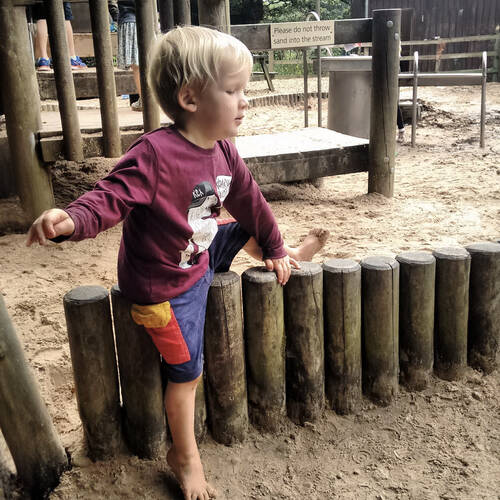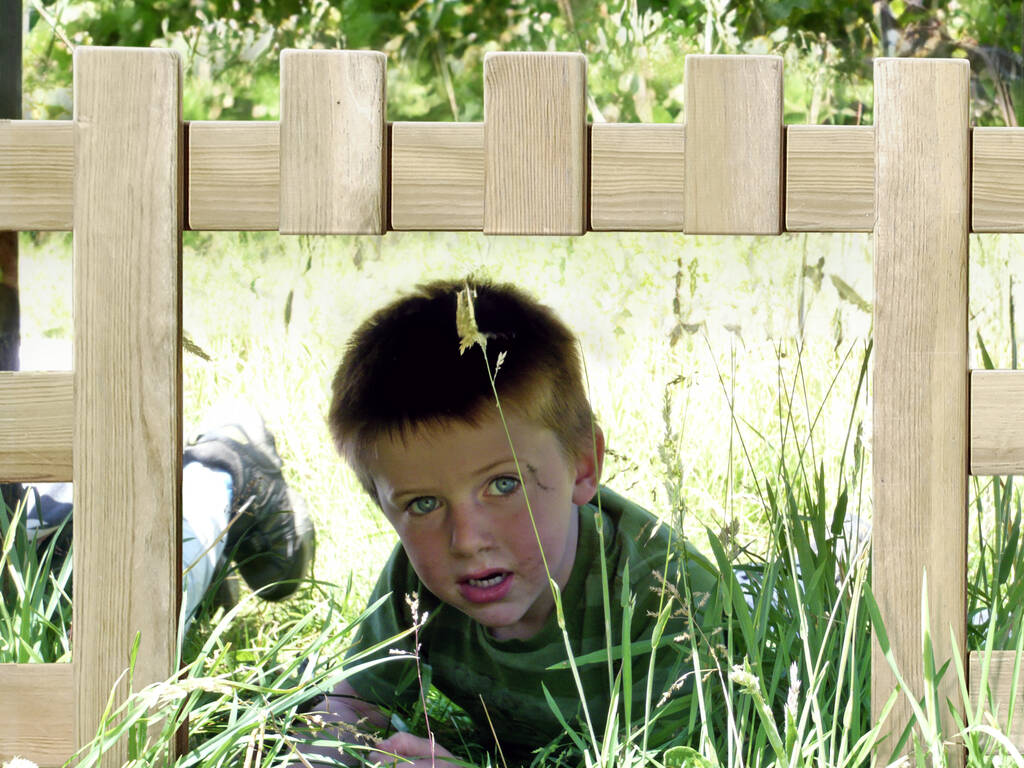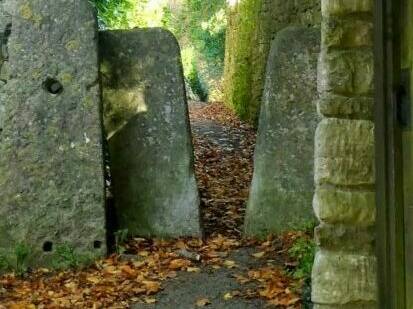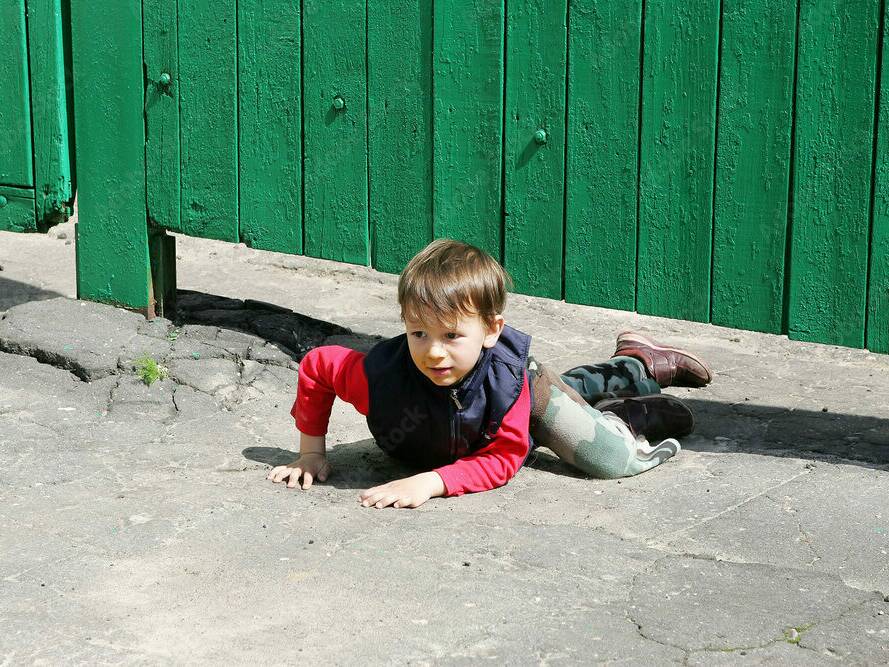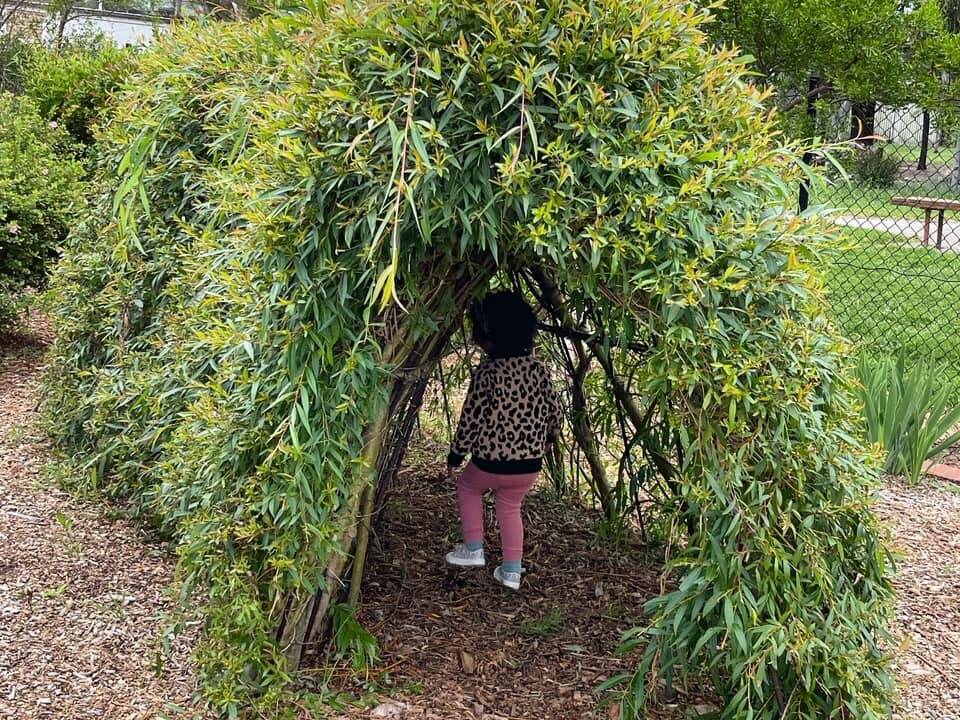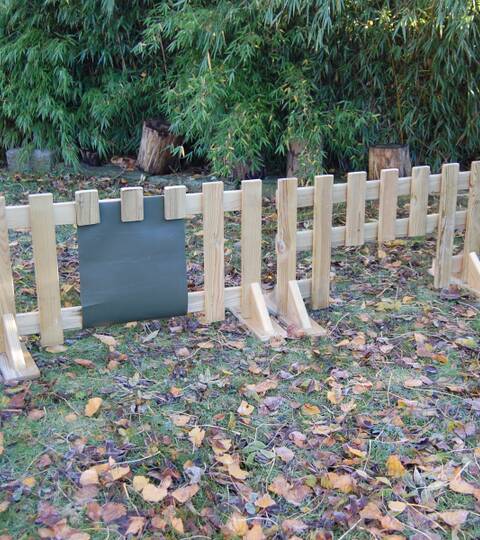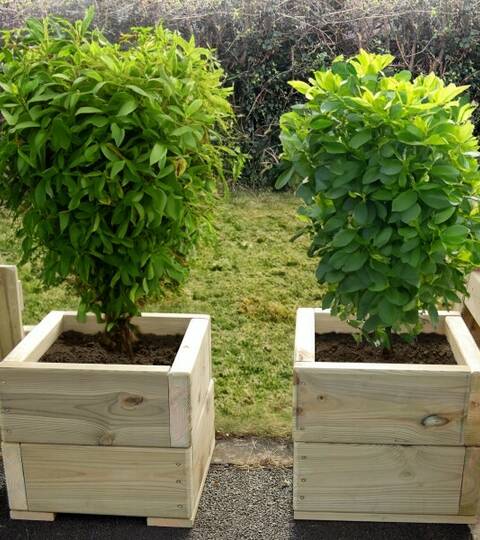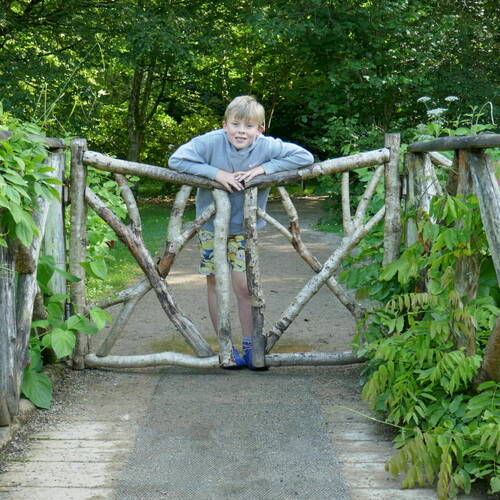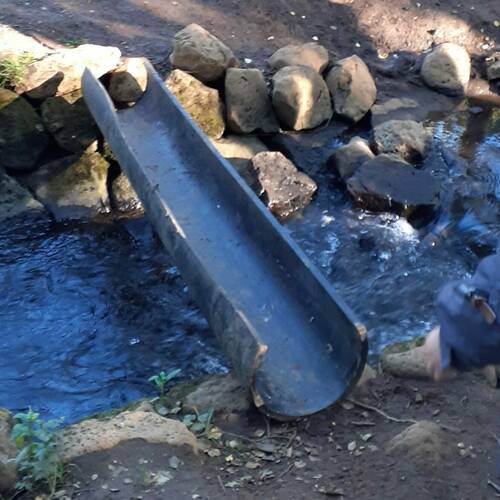Upright Squeeze
Squeezes that are navigated in an upright position.
These permeable boundaries demand effort and strategic thinking to pass through. Adjusting your body angle may be necessary, turning and shuffling sideways, removing bulky clothes, even breathing in, are all strategies that may be required to pass through a tight squeeze.
The squeeze creates a moment of enclosure, pushing against resistance until emerging into a new space. There maybe a sense of risk of potentially becoming stuck, but with determination and effort you pop out! A very different sensation to just walking through a gap.
Upright squeezes may already exist in your setting, between a fence and a building for example. Alternatively, you can create them by moving equipment so that its close to another piece of equipment or a wall, or placing hardy plants or planters side by side.
